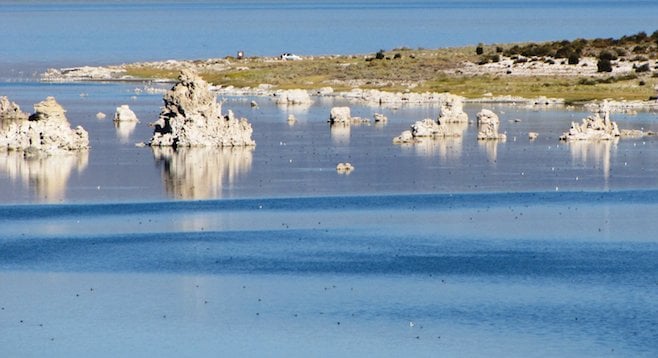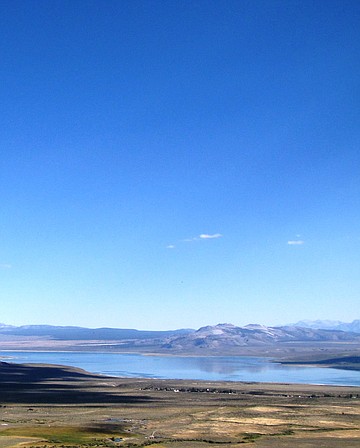 Facebook
Facebook
 X
X
 Instagram
Instagram
 TikTok
TikTok
 Youtube
Youtube

Highway 89 south out of Lake Tahoe to Route 395 has got to be one of THE most pleasurable rides in a stick shift.
It’s definitely a road reserved for the unfettered. The steep switchbacks require aggressive use of the gears and the views – if granted with clear skies – extend onto and into forever.
Coming down off the mountain pass into a Rock Monster–like canyon, the view reveals a wide-open valley as far as the eye can see: the Great Basin, the largest watershed in North America. And there, at the center of it all, lies Mono Lake.

Mono Lake, surrounded by the remnants of an ancient lava flow, is southeast of Yosemite National Park and the Sierras. Known for its tufa towers, mineral deposits that jut out from the water’s surface due to there being less rain to replenish that which evaporates, Mono is the largest natural lake in California. It’s 2.5 times as salty and 80 times as alkaline as the ocean.
As I drove, approaching the lake, its stunningly still surface mirrored the cool autumn pinks and blues of the late afternoon sky.
Evening shadows began to stretch long and low over Mammoth Lakes and Inyo National Forest as Mount Whitney came into view south of the lake. Juxtaposed with Death Valley at 282 feet below sea level, Whitney peaks at 14,505 feet, earning it recognition as the highest summit in the States, excluding Alaska.
Further south, a fault block geological formation – the contrast of the smooth, creased lowland hills of the valley to jagged un-weathered eastern peaks called the Needles – was pronounced as the sun began to set.


Highway 89 south out of Lake Tahoe to Route 395 has got to be one of THE most pleasurable rides in a stick shift.
It’s definitely a road reserved for the unfettered. The steep switchbacks require aggressive use of the gears and the views – if granted with clear skies – extend onto and into forever.
Coming down off the mountain pass into a Rock Monster–like canyon, the view reveals a wide-open valley as far as the eye can see: the Great Basin, the largest watershed in North America. And there, at the center of it all, lies Mono Lake.

Mono Lake, surrounded by the remnants of an ancient lava flow, is southeast of Yosemite National Park and the Sierras. Known for its tufa towers, mineral deposits that jut out from the water’s surface due to there being less rain to replenish that which evaporates, Mono is the largest natural lake in California. It’s 2.5 times as salty and 80 times as alkaline as the ocean.
As I drove, approaching the lake, its stunningly still surface mirrored the cool autumn pinks and blues of the late afternoon sky.
Evening shadows began to stretch long and low over Mammoth Lakes and Inyo National Forest as Mount Whitney came into view south of the lake. Juxtaposed with Death Valley at 282 feet below sea level, Whitney peaks at 14,505 feet, earning it recognition as the highest summit in the States, excluding Alaska.
Further south, a fault block geological formation – the contrast of the smooth, creased lowland hills of the valley to jagged un-weathered eastern peaks called the Needles – was pronounced as the sun began to set.
Comments